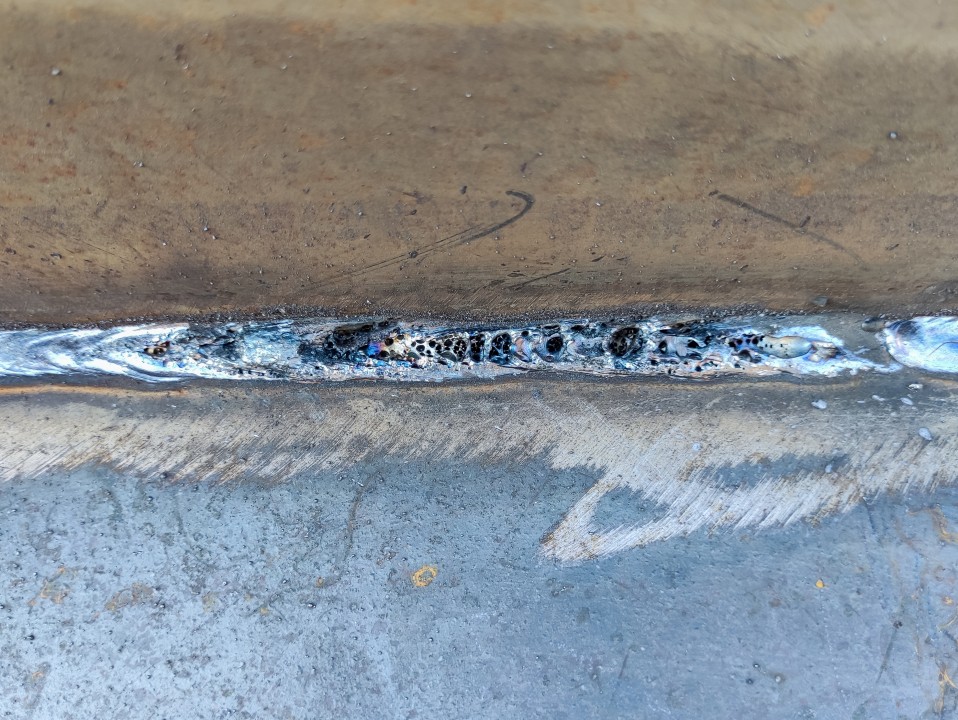How to Identify What is Porosity in Welding and Improve Your Technique
How to Identify What is Porosity in Welding and Improve Your Technique
Blog Article
Porosity in Welding: Identifying Common Issues and Implementing Ideal Practices for Avoidance
Porosity in welding is a prevalent issue that commonly goes undetected till it creates considerable troubles with the integrity of welds. This typical flaw can endanger the toughness and longevity of bonded frameworks, presenting safety dangers and resulting in pricey rework. By recognizing the origin of porosity and executing efficient prevention approaches, welders can substantially improve the quality and dependability of their welds. In this discussion, we will explore the crucial factors adding to porosity development, examine its harmful impacts on weld efficiency, and discuss the very best techniques that can be taken on to lessen porosity incident in welding processes.
Usual Root Causes Of Porosity

Another constant culprit behind porosity is the visibility of impurities externally of the base metal, such as oil, oil, or rust. When these impurities are not successfully eliminated before welding, they can vaporize and end up being caught in the weld, causing flaws. Moreover, utilizing unclean or damp filler products can present pollutants right into the weld, adding to porosity issues. To alleviate these common root causes of porosity, complete cleansing of base steels, proper securing gas choice, and adherence to optimum welding criteria are essential practices in achieving top notch, porosity-free welds.
Effect of Porosity on Weld High Quality

The existence of porosity in welding can substantially compromise the architectural integrity and mechanical residential properties of bonded joints. Porosity develops gaps within the weld steel, compromising its overall strength and load-bearing ability.
Welds with high porosity degrees tend to show reduced effect stamina and decreased ability to flaw plastically before fracturing. Porosity can hinder the weld's ability to successfully send forces, leading to early weld failure and possible security dangers in critical structures.
Finest Practices for Porosity Avoidance
To boost the architectural integrity and high quality of bonded joints, what certain procedures can be applied to decrease the event of porosity during the welding process? Making use of the correct welding method for the details material being bonded, such as readjusting the welding angle and gun setting, can additionally avoid porosity. Regular examination of welds and instant removal of any kind of issues recognized throughout the welding procedure are vital methods to protect against porosity and create premium welds.
Relevance of Proper Welding Methods
Implementing appropriate welding techniques is extremely important in ensuring the architectural stability and top quality of welded joints, constructing upon the foundation of reliable porosity prevention actions. Extreme warmth can lead to boosted porosity due to the entrapment of gases in the weld swimming pool. Furthermore, making use of the pop over here suitable welding criteria, such as voltage, present, and take a trip speed, is vital for achieving audio welds with marginal porosity.
Additionally, the selection of welding process, whether it be MIG, TIG, or stick welding, must straighten with the particular needs of the project to make sure optimum results. Appropriate cleansing and preparation of the base metal, along with selecting the best filler product, are additionally important parts of competent welding methods. By sticking to these best methods, welders can lessen the threat of porosity formation and produce high-quality, structurally sound welds.

Evaluating and Quality Assurance Measures
Checking treatments are vital to identify and protect against porosity in welding, making sure the toughness and durability of the final item. Non-destructive screening approaches such as ultrasonic screening, radiographic testing, and visual inspection are commonly employed to recognize possible flaws like porosity.
Carrying out pre-weld and post-weld inspections is additionally important in keeping quality assurance visit the website standards. Pre-weld inspections include verifying the products, devices setups, and tidiness of the workplace to avoid contamination. Post-weld examinations, on the various other hand, assess the last weld for any issues, including porosity, and validate that it meets defined standards. Applying an extensive quality assurance plan that consists of extensive screening procedures and examinations is critical to lowering porosity issues and making sure the overall high quality of bonded joints.
Conclusion
In final thought, porosity in welding can be an usual concern that influences the quality of welds. By recognizing the usual root causes of porosity and executing finest methods for avoidance, such as correct welding techniques and testing procedures, welders can make certain high check my reference quality and reputable welds. It is necessary to focus on avoidance approaches to decrease the occurrence of porosity and preserve the stability of welded frameworks.
Report this page